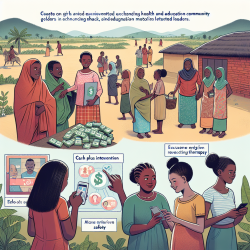Introduction
Transactional sex, defined as non-marital, non-commercial sexual relationships motivated by the implicit assumption that sex will be exchanged for material benefit or status, poses significant risks for HIV infection among adolescent girls and young women (AGYW) in sub-Saharan Africa. A recent study titled "Transactional sex among adolescent girls and young women enrolled in a cash plus intervention in rural Tanzania: a mixed-methods study" offers valuable insights into the contextual factors associated with transactional sex and evaluates the impact of a cash plus intervention on reducing such engagements.
Key Findings
The study found that 26% of unmarried AGYW reported engaging in transactional sex. Key risk factors included increasing age and not being enrolled in school, while staying in school was negatively associated with transactional sex. Notably, the cash plus intervention, which aimed to provide economic support along with other resources, did not significantly reduce transactional sex.
Implications for Practitioners
For practitioners working with AGYW, particularly in speech language pathology and related fields, these findings underscore the importance of addressing both economic and psychosocial factors in interventions. Here are some actionable steps practitioners can take:
- Promote School Enrollment: Encourage AGYW to stay in school as it is associated with reduced engagement in transactional sex and improved future employment prospects.
- Address Psychosocial Factors: Develop programs that enhance self-esteem and agency among AGYW, helping them make informed decisions about their relationships.
- Comprehensive Interventions: Design interventions that combine economic support with education on gender equality and relationship dynamics to address the complex drivers of transactional sex.
Encouraging Further Research
While the study provides valuable insights, it also highlights the need for further research to understand the nuanced motivations and contexts of transactional sex. Practitioners are encouraged to collaborate with researchers to explore innovative interventions that address both the economic and social dimensions of transactional sex.
Conclusion
Transactional sex among AGYW is a multifaceted issue that requires a comprehensive approach. By focusing on education, psychosocial support, and economic empowerment, practitioners can contribute to reducing the risks associated with transactional sex and improving outcomes for young women.
To read the original research paper, please follow this link: Transactional sex among adolescent girls and young women enrolled in a cash plus intervention in rural Tanzania: a mixed-methods study.










